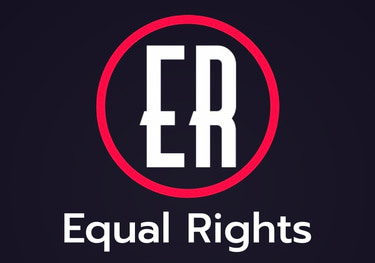The Impact of Technology on Human Rights
Kylo B
7/28/2024
The Impact of Technology on Human Rights
Technology has transformed the world in myriad ways, influencing every aspect of human life, including the realm of human rights. While it has provided powerful tools for promoting and protecting human rights, it has also introduced new challenges and potential for abuse. This article explores the dual impact of technology on human rights, highlighting both its positive contributions and the risks it poses.
Positive Impacts of Technology on Human Rights
Enhancing Communication and Advocacy
Social Media and Awareness: Platforms like Twitter, Facebook, and Instagram have become vital tools for raising awareness about human rights issues. Activists and organizations use these platforms to share information, mobilize supporters, and draw global attention to injustices. The #MeToo movement and Black Lives Matter are prominent examples of how social media can amplify voices and drive social change.
Digital Campaigns: Online petitions, crowdfunding, and digital advocacy campaigns have democratized activism, allowing individuals and groups to rally support for causes more efficiently and effectively. Websites like Change.org and GoFundMe have facilitated numerous successful campaigns for justice and human rights.
Documenting and Exposing Abuses
Citizen Journalism: Smartphones and the internet have empowered ordinary people to document and share evidence of human rights abuses in real-time. Videos and images captured by citizens have played crucial roles in exposing police brutality, war crimes, and other violations, often leading to public outcry and legal action.
Satellite Imagery and Drones: Advanced technologies like satellite imagery and drones have been used to monitor and document human rights abuses in remote and inaccessible areas. These tools have provided critical evidence in conflict zones, environmental disasters, and areas affected by natural disasters.
Improving Access to Information and Education
E-Learning Platforms: Online education platforms have made it possible for people in marginalized communities to access educational resources and learn about their rights. MOOCs (Massive Open Online Courses) and other digital learning tools have empowered individuals with knowledge and skills to advocate for themselves and their communities.
Open Data and Transparency: Technology has facilitated greater transparency and accountability in governance. Open data initiatives and online databases provide citizens with access to information about government activities, budgets, and human rights records, enabling them to hold authorities accountable.
Supporting Humanitarian Efforts
Crisis Response and Management: During humanitarian crises, technology plays a critical role in coordinating relief efforts, tracking displaced populations, and delivering aid. Digital tools such as mobile applications, GPS, and data analytics help humanitarian organizations respond more effectively to emergencies and protect vulnerable populations.
Blockchain for Identity: Blockchain technology is being explored to provide secure and verifiable digital identities for refugees and stateless individuals, ensuring their access to essential services and legal protections.
Negative Impacts of Technology on Human Rights
Surveillance and Privacy Violations
Mass Surveillance: Governments and corporations increasingly use advanced surveillance technologies to monitor citizens' activities. Mass surveillance programs can infringe on privacy rights and freedom of expression, creating a climate of fear and self-censorship. Examples include the widespread use of CCTV cameras, facial recognition software, and data mining techniques.
Invasive Data Collection: The collection and analysis of personal data by tech companies can lead to privacy breaches and misuse of information. Data collected from social media, online transactions, and other digital activities can be exploited for profit or used to target individuals based on their personal characteristics.
Censorship and Information Control
Internet Shutdowns: Authoritarian regimes often resort to internet shutdowns and censorship to suppress dissent and control the flow of information. Cutting off access to the internet restricts freedom of expression and the ability to organize and protest. Countries like Myanmar, Iran, and China have frequently employed such tactics to silence opposition.
Content Moderation: While content moderation is necessary to combat misinformation and harmful content, it can also be misused to stifle legitimate speech. Social media platforms face challenges in balancing the removal of harmful content with the protection of free expression, sometimes resulting in the unjust removal of posts and accounts.
Digital Divide and Inequality
Access to Technology: The digital divide refers to the gap between those who have access to technology and the internet and those who do not. Marginalized communities, particularly in developing countries, often lack access to digital tools, exacerbating existing inequalities and limiting their ability to benefit from technological advancements.
Economic Displacement: Automation and artificial intelligence (AI) are transforming the labor market, potentially leading to job displacement and economic inequality. Workers in certain industries and low-skilled jobs are at higher risk of being replaced by machines, which can have significant social and economic implications.
Cybersecurity Threats
Cyber Attacks: Human rights organizations, activists, and journalists are increasingly targeted by cyber attacks, including hacking, phishing, and malware. Such attacks can compromise sensitive information, endanger lives, and disrupt advocacy efforts.
Misinformation and Disinformation: The spread of misinformation and disinformation online can undermine democratic processes, incite violence, and erode public trust. False information about elections, public health, and social issues can have serious consequences for human rights and social stability.
Technology's impact on human rights is multifaceted, offering both opportunities and challenges. On one hand, it has empowered individuals and organizations to advocate for justice, document abuses, and improve access to information and services. On the other hand, it has introduced new risks related to surveillance, privacy, censorship, inequality, and cybersecurity.
To harness the positive potential of technology while mitigating its negative effects, it is essential to adopt a human rights-centered approach to technological development and governance. This includes implementing robust privacy protections, ensuring equitable access to digital tools, promoting transparency and accountability, and safeguarding freedom of expression. By doing so, we can create a digital future that upholds and advances human rights for all.
